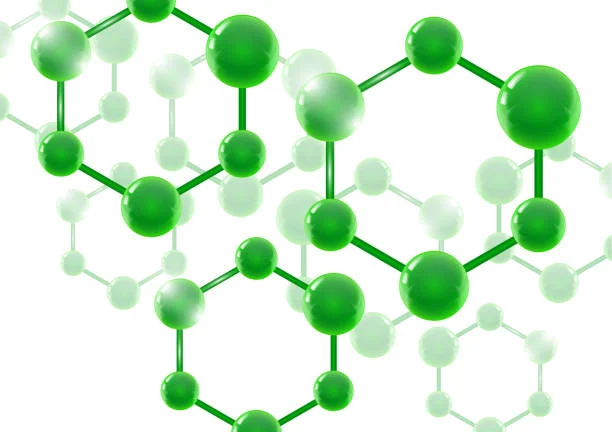
Sodium cyanide (NaCN) has long been a subject of intense interest and concern across various fields. This is due to its highly toxic nature and wide - ranging applications in industry.
Toxicity: A Lethal Threat
Sodium cyanide is extremely toxic to humans. Even a minuscule amount, as little as 5% of a teaspoon, can be fatal. When it enters the human body, it dissociates into cyanide ions (CN⁻). These ions have a strong affinity for the iron in cytochrome oxidase, an enzyme crucial for the electron transport chain in cellular respiration. By binding to the iron, cyanide ions inhibit the enzyme's function, blocking the transfer of electrons and ultimately disrupting the body's ability to produce energy in the form of ATP. This leads to rapid cellular dysfunction, lactic acidosis (as cells switch to anaerobic metabolism), and eventually death. The symptoms of sodium cyanide poisoning include respiratory distress, convulsions, loss of consciousness, and cardiac arrest. Given this extreme lethality, any potential exposure to Sodium Cyanide, whether in industrial accidents or other scenarios, immediately raises serious public health and safety concerns.
Widespread Industrial Applications
Gold Mining
One of the primary uses of Sodium cyanide is in the gold mining industry. Most of the world's gold is not found in large nuggets but rather as fine particles dispersed in rocks. To extract gold from these ores, a process called cyanidation is commonly employed. After the ore has been mined and milled into a fine powder, it is added to a solution of sodium cyanide. The gold forms strong bonds with the cyanide molecules, creating soluble gold - cyanide complexes. These complexes can then be separated from the rest of the minerals in the ore, as they are soluble in water. Subsequently, zinc is added to the solution, which reacts with the gold - cyanide complexes, causing the gold to precipitate out as a solid. This final product is then smelted to isolate the pure gold. The global demand for gold, driven by factors such as jewelry making, investment, and industrial applications, means that a large quantity of sodium cyanide is used in gold mining operations worldwide. As a result, any issues related to sodium cyanide in this context, such as its safe handling, storage, and transportation, attract significant attention due to the industry's economic importance.
Other Industrial Uses
Sodium cyanide also plays a vital role in other industrial sectors. In the field of electroplating, it is used as a component in some plating baths. It helps in achieving a smooth and uniform coating of metals such as copper, silver, cadmium, and zinc on various substrates. In the manufacturing of organic chemicals, sodium cyanide serves as a key starting material. For example, in the synthesis of certain pharmaceuticals, it is used to introduce the cyano group (-CN) into organic molecules, which is essential for the formation of many important drug compounds. It is also used in the production of synthetic fibers, plastics, and dyes. In the dye industry, it is involved in the synthesis of compounds like (cyanuric chloride), which is an important intermediate for making reactive dyes and also serves as a raw material for producing optical brighteners. Given its importance in these diverse industrial processes, any disruptions in the supply, handling, or safety of sodium cyanide can have far - reaching economic consequences.
Incidents and Their Impact
High - profile incidents involving sodium cyanide have further contributed to its prominence in the public eye. For instance, the Tianjin explosion in 2015 was a tragic event that brought sodium cyanide into the spotlight. At the explosion site, a large stockpile of 700 tonnes of sodium cyanide was discovered, which was more than 70 times the legal limit. The explosion raised concerns about the potential release of this highly toxic chemical into the environment. If the sodium cyanide had been released and come into contact with water or high temperatures, it could have formed hydrogen cyanide gas, a highly dangerous and volatile substance. Hydrogen cyanide is extremely toxic when inhaled and can quickly spread in the air, endangering the lives of people in the vicinity. Although the Chinese authorities took swift action to manage the situation, such as treating the spill with hydrogen peroxide to reduce the formation of more dangerous compounds, the incident still highlighted the significant risks associated with the storage and handling of sodium cyanide. The public's awareness of the potential hazards of sodium cyanide was greatly heightened, and it led to increased scrutiny of safety regulations and practices in industries that deal with this chemical.
In conclusion, sodium cyanide's high toxicity, extensive use in key industries like gold mining and chemical manufacturing, and its involvement in major incidents all contribute to its status as a closely - watched chemical. The need to balance its industrial utility with strict safety measures to protect human health and the environment remains a critical challenge.
- Random Content
- Hot content
- Hot review content
- 31%-36% HCl/Industrial Grade Hydrochloric Acid
- Acetone
- Calcium Peroxide 60% Assay Yellowish Tablet
- Barium carbonate 99% powder
- Hydrogen Peroxide
- Fertilizer magnesium sulfate/magnesium sulfate monohydrate
- Food grade Antioxidant T501 Antioxidant 264 Antioxidant BHT 99.5%
- 1Discounted Sodium Cyanide (CAS: 143-33-9) for Mining - High Quality & Competitive Pricing
- 2China's New Regulations on Sodium Cyanide Exports and Guidance for International Buyers
- 3Sodium Cyanide 98% CAS 143-33-9 gold dressing agent Essential for Mining and Chemical Industries
- 4International Cyanide(Sodium cyanide) Management Code - Gold Mine Acceptance Standards
- 5China factory Sulfuric Acid 98%
- 6Anhydrous Oxalic acid 99.6% Industrial Grade
- 7Oxalic acid for mining 99.6%
- 1Sodium Cyanide 98% CAS 143-33-9 gold dressing agent Essential for Mining and Chemical Industries
- 2High Quality 99% Purity of Cyanuric chloride ISO 9001:2005 REACH Verified Producer
- 3Zinc chloride ZnCl2 for High Molecular Weight Polymers Initiator
- 4High Purity · Stable Performance · Higher Recovery — sodium cyanide for modern gold leaching
- 5High Quality Sodium Ferrocyanide / Sodium Hexacyanoferr
- 6Gold Ore Dressing Agent Safe Gold Extracting Agent Replace Sodium Cyanide
- 7Sodium Cyanide 98%+ CAS 143-33-9










Online message consultation
Add comment: